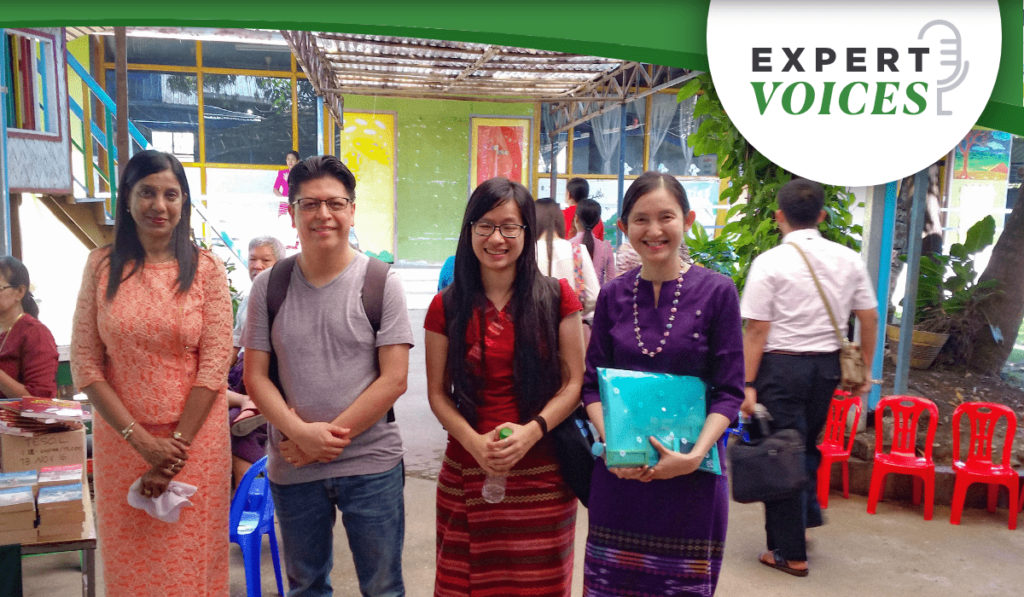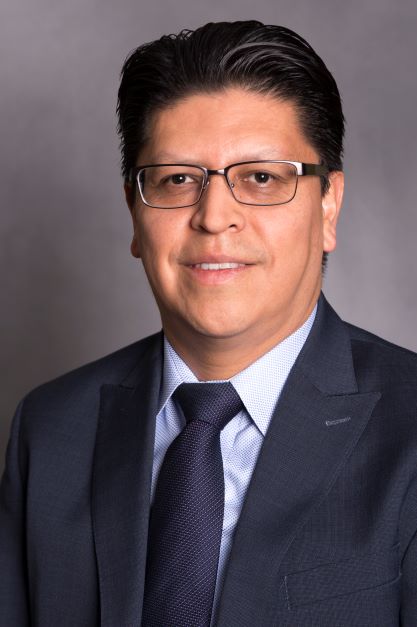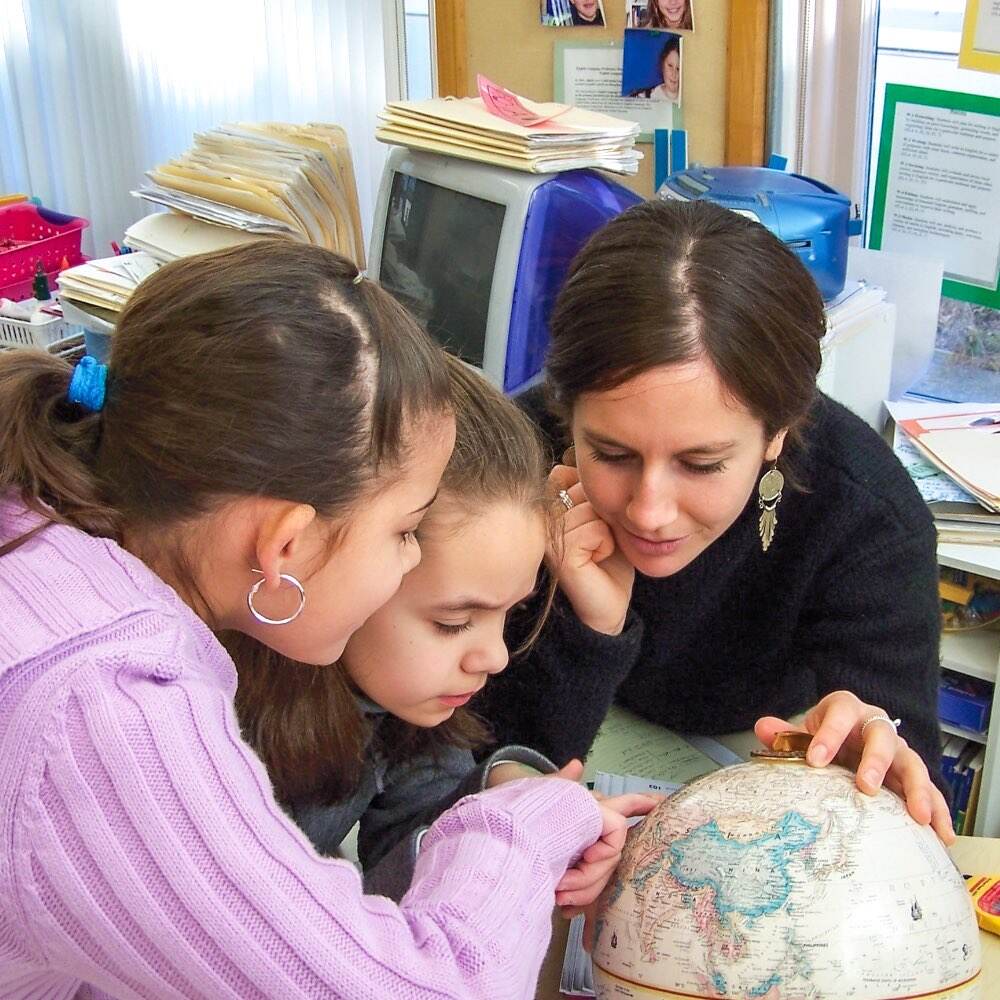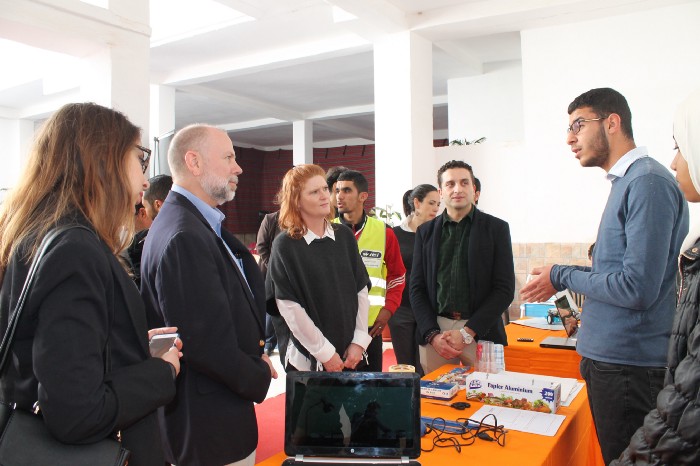Expert Voices: At the Intersection of World Learning and SIT; TESOL and STEM
September 1st, 2022

German Gomez is director of TESOL and STEM education for World Learning.
He spoke to us about how his team often collaborates with SIT, the importance of cultural immersion instruction when teaching English to refugees, and the intersection of TESOL and STEM education.
What is your role at World Learning?

I am the director of TESOL and STEM education. My role is to oversee the program quality of our teacher training and English language learning programs globally. This might include training university professors in Indonesia to working with teachers in India, for example. I work with a really wonderful group of technical specialists.
I am also involved in creating and implementing strategic partnerships overseas in countries like Mexico, Guatemala, Ecuador, Costa Rica, and Turkey.
What are some examples of programs under your portfolio?
One of our biggest programs is the Open English Professional Network. We designed and implemented three courses that we offer in 10-week terms to English language instructors throughout the world with our implementing partner. This fully online, asynchronous program develops skills in specific areas, like teaching grammar communicatively. We also have content-based instruction that integrates critical thinking skills and cultural learning. Dr. Leslie Turpin, chair of SIT’s MA in TESOL, was instrumental in designing the course for this many years ago.
Another program is the Madrassa English Language Teacher Training Program. We work with madrassa teachers, supporting them to develop their English language proficiency skills and also their English language teaching skills. Our partner for this program is National Geographic, and we have created a blended format teacher training program from their original online program.
And there is also the English Language Investment and Training Economic Success (ELITES) program. This mentorship program provides general and business English language instruction to participants ages 18 through 25. There is also a workforce development component which includes instruction on management skills, job shadowing, and a virtual job fair.
World Learning has a very diverse and rich network of teacher trainers and TESOL experts around the world, and many of these are SIT MA alumni.
You mentioned working with Dr. Leslie Turpin from SIT on curriculum design. Are there other programs where World Learning and SIT cross-collaborate?
We also have the TESOL certificate course which is a 180-hour certificate program offered around the world through partner centers. The program was originally developed based on the SIT MA in TESOL—taking the best practices from the master’s program and putting them into a certificate package that was offered to pre-service teachers. It’s been offered for 25 years and is now offered to in-service teachers for professional development.
Our programming is greatly influenced by the MA in TESOL and what the SIT faculty developed. All of our programs are based on experiential learning and include reflection. They very much reflect the values of the MA in TESOL.

In addition, World Learning has a very diverse and rich network of teacher trainers and TESOL experts around the world, and many of these are SIT MA alumni. They've gone through the MA program, developed a career in the field, and now hold important positions as regional English language officers to the Department of State or people in charge of university English language departments. There is a strong reputation attached to the SIT program that has been a very positive factor for World Learning’s presence in the field of TESOL.
The New Vermonter Education Program is another recent effort where there is an opportunity for World Learning to work with SIT faculty.
Can you share more about that?
NVEP is a program in partnership with the Ethiopian Community Development Council (ECDC) in which housing and education is provided to refugees. It includes World Learning’s English language and cultural orientation program for refugees. Phase one of the program was that refugees were given lodging on campus along with the English language and cultural immersion program. A group of SIT faculty and former faculty volunteers developed and implemented the English language and cultural immersion component of the program.
As of April, it came under management by World Learning. The faculty and volunteers make up an advisory board that meets with my program management team. The purpose of the board is to provide expertise on program relevance and improvement and to further connect to local stakeholders because they are very well connected in Brattleboro.
The goal is for the program to expand to other refugees. We are expecting refugees from the Republic of Congo and Guatemala to arrive in Brattleboro.
What is the vision for phase two of NVEP?
Phase two has three different layers. The first layer is community-based. It’s taking that initial language and cultural immersion that SIT created, scaling it out, and offering it in a community center downtown. We are working with the State of Vermont to provide funding.
The goal is for the program to expand to other refugees. We are expecting refugees from the Republic of Congo and Guatemala to arrive in Brattleboro.
There are many parties involved in this process. ECDC provides case management for the refugees, which involves housing and legal services. What we do as an organization is provide the English language and cultural immersion component.
What do you mean by cultural immersion?
We don’t see understanding cultural elements as something that is separate from English language learning—the two go together.
Cultural immersion is not about imposing a culture. It's about providing exposure so that there's a reflection process—the ability for students to reflect on these differences and go through the process of either adapting to, rejecting, or eventually accepting the information.
Our English program provides instruction for the refugee to be able to navigate the local context of the new culture. For example, the terms in a lease. The part of this language lesson focuses on expressions, words, and vocabulary that are relevant to this specific function: Understanding the terms of the lease, asking questions about the rental property, learning the expectations when you rent an apartment in the U.S.
In some cultures, some things are allowed in rental units or communal spaces, while in other cultures they are not.
Cultural immersion is not about imposing a culture. It's about providing exposure so that there's a reflection process—the ability for students to reflect on these differences and go through the process of either adapting to, rejecting, or eventually accepting the information.
You said there were three layers to phase two of the NVEP. What are the other layers?
The second layer is continued on-campus programming. Specifically in the fall, we expect to provide temporary housing to another group of refugees on campus.
And the third layer would be to develop a network of conversation partners.
Overall, NVEP really taps into the DNA of the organization. It is taking the expertise and foundation of the SIT faculty and volunteers and incorporating management elements from the development side to create long-term sustainability relying on funding from key partners.
We have people who are not only not proficient in English, but they don’t even have preliteracy skills—those who haven’t even had the experience of holding a pen or a pencil.
But we also have students who are quite proficient and have come in with established professional careers.
For them, we're looking for community volunteers they can meet with to have a conversation. They are practicing English and developing their English language proficiency through this process instead of a class.
As part of this third layer, we also want to implement an online learning language program—an area World Learning really evolved in during the pandemic with sessions that have both synchronous and asynchronous for language learners.
Overall, NVEP really taps into the DNA of the organization. It is taking the expertise and foundation of the SIT faculty and volunteers and incorporating management elements from the development side to create long-term sustainability relying on funding from key partners.
Focusing on another point of intersection, what is the connection between TESOL and STEM education?
Both practice areas support skill development, especially among young people. English is an essential skill for work. And STEM education develops many skills that obviously support the transition to engineering and science fields, along with critical thinking. They both do a lot to develop crucial skills for academic and workforce purposes.

A specific example is a teacher training program for STEM teachers we implemented last year in Egypt.
Many teachers still have lessons focused on lectures even when implementing a more practical approach, like for a lesson about building a robotic arm, might benefit students more.
So we took the general principle of our TESOL certificate program—get students to practice and experience and reflect on the experience—and applied it to the training. It was no longer a lecture but more about getting the students involved. They now try out things in robotics and have time to think about it and reflect on what they did.
Also, in STEM education, we focus quite a bit on the practical. We connect STEM participants to a wider world community of STEM enthusiasts and practitioners, which often use English as the medium of communication. So here, the TESOL component comes into play again.
Any final thoughts?
I just want to add that the TESOL work and STEM work and NVEP work have been the effort of many wonderful and really committed professionals working in different capacities. It's been really rewarding to work with these different teams—a learning experience for me. And many times, it’s been a humbling experience as well.
